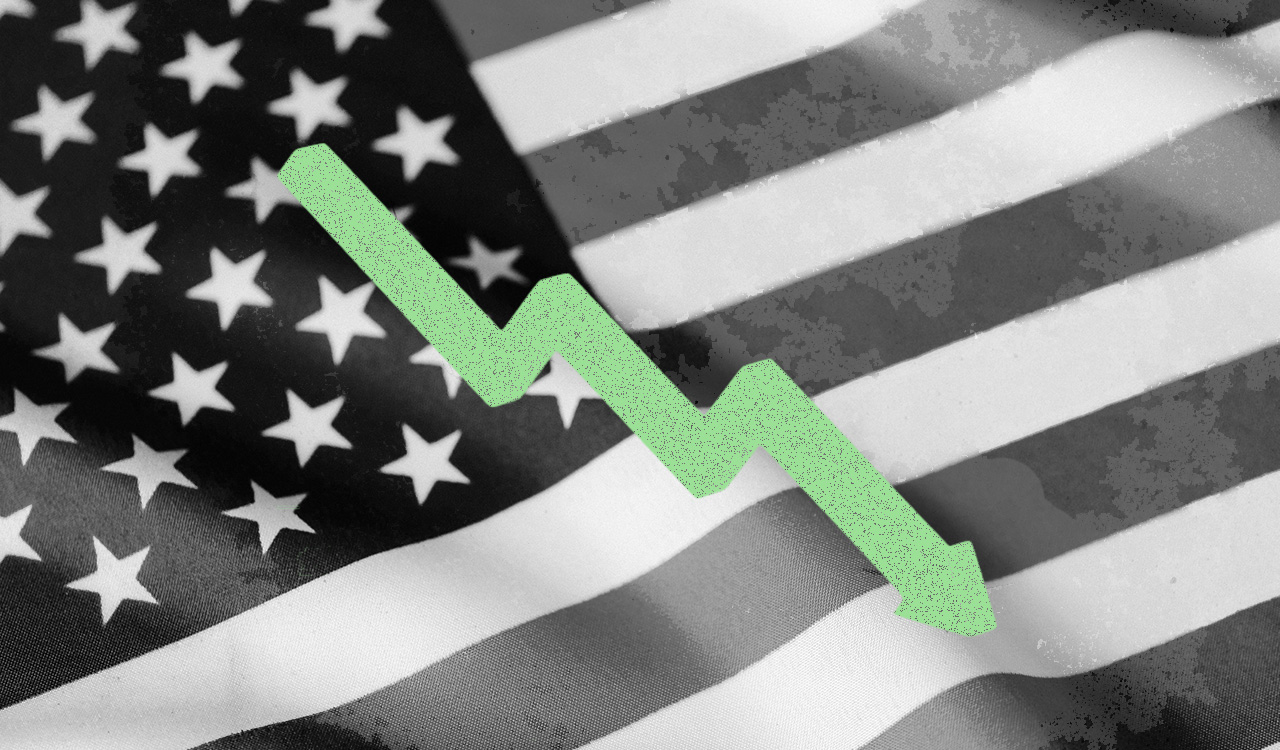Just a year or two ago, many people believed that the Covid-19 pandemic had sparked a massive, permanent acceleration of ecommerce adoption. This thesis became the conventional wisdom among executives at pure-play ecommerce retailers and other companies that stood to benefit from ecommerce growth.
These rosy forecasts haven’t panned out, though. Many consumers have returned to their pre-pandemic shopping habits over the past two years, favoring brick-and-mortar stores. High inflation and a shift in spending priorities away from merchandise categories that were popular during the pandemic have added to the top-line pressure for some ecommerce retailers. Making matters even worse, costs are soaring due to a tight labor market, high fuel prices, and ongoing instability in the supply chain.
The recent woes of Carvana, Wayfair, and Amazon demonstrate that while consumers still like the convenience of ecommerce, creating a sustainable, profitable ecommerce business model is challenging.
This perfect storm has forced a slew of ecommerce companies to slam the brakes on their growth strategies in 2022. Layoffs, cost cuts, and canceled investment plans have become the norm. The current downturn could even prove fatal for some overextended ecommerce players.
Wayfair and Carvana: Stunning Reversals of Fortune
The pandemic initially proved to be a boon for Wayfair and Carvana. With consumers spending more time at home and avoiding public transit, demand for home furnishings and used cars soared. Meanwhile, the ease and safety of shopping online propelled huge market share gains for both ecommerce giants.
Wayfair’s revenue jumped 55 percent in 2020 and continued to grow quickly in the first quarter of 2021. Carvana reported even more impressive gains, growing revenue from less than $4 billion in 2019 to $12.8 billion in 2021. Just as importantly, both companies turned profitable during the pandemic, following years of losing money while investing to drive growth.
Business trends have taken a sharp turn for the worse since then. By the second quarter of 2021, Wayfair’s revenue was already shrinking, as consumers returned to in-person shopping and began shifting spending towards other merchandise categories. Revenue has continued falling throughout 2022. In Q3 2022, Wayfair posted revenue of $2.84 billion: down from $3.84 billion two years earlier.
Wayfair’s revenue last quarter was still up by 23 percent compared to the same period in 2019. But prior to the pandemic, Wayfair was consistently growing its top line more than 30 percent annually. Furthermore, TJX’s HomeGoods chain has also grown its revenue 23 percent over the past three years, whereas it was growing more slowly than Wayfair before the pandemic hit. Contrary to the prediction that the pandemic would catalyze a permanent shift towards ecommerce, Wayfair’s market share growth has actually tailed off.
Moreover, after turning profitable in 2020, Wayfair has plunged deep into the red again. It racked up an operating loss of more than $1 billion in the first nine months of 2022.
Carvana’s revenue has also started to decline recently, though the used car retailer remains on pace to post revenue growth on a full-year basis in 2022. But Carvana’s foray into profitability proved even briefer than Wayfair’s. Carvana lost nearly $1.5 billion in the first nine months of 2022, as unfavorable macroeconomic conditions caused sales growth to grind to a halt just as the company was aggressively ramping up its capacity to buy, recondition, and sell used vehicles.
Fighting for Survival
Thanks to their incredible results early in the pandemic, Wayfair and Carvana both achieved $30 billion-plus stock market valuations as of August 2021. But now, both ecommerce leaders are fighting just to survive as independent companies. Wayfair’s market capitalization has fallen to $3.4 billion, while Carvana’s has plunged below the $1 billion mark.
Despite posting better top-line growth than Wayfair, Carvana is in more danger. The company has $7.4 billion of debt, compared to only $2.3 billion of committed liquidity, and it burned over $1 billion of cash in the first nine months of 2022. Conditions could get worse before they get better. High interest rates are putting pressure on used vehicle demand. And if car prices decline from the elevated levels of the past two years, Carvana could rack up big losses on the vehicles in its inventory today.
Thus, Carvana must cut costs quickly to stem its losses so it can live to fight another day. It laid off 2,500 employees (roughly 12 percent of its workforce) in May and recently announced another 1,500 layoffs. CEO Ernie Garcia acknowledged to staff that management was blindsided by how quickly business conditions soured.
With nearly $1.3 billion of cash and investments on hand and only $3.1 billion of debt, Wayfair is not in quite such dire straits. Still, the company has burned $1.1 billion of cash over the past year: a pace that clearly isn’t sustainable. Wayfair can’t expect market conditions to improve quickly, either: inflation is crimping discretionary budgets, and home furnishings spending isn’t a high priority for most consumers right now.
As a result, Wayfair has also made job cuts in an effort to right-size its cost structure. In August, the company laid off 870 employees: around 5 percent of its total workforce and 10 percent of its corporate staff. Like his counterpart at Carvana, Wayfair CEO Niraj Shah issued a mea culpa, noting that he had personally pushed for expanding the company’s headcount to meet expected growth that never materialized.
Amazon Pulls Back, Too
Even mighty Amazon has found itself overextended in the current economic climate. On the bright side, revenue is still growing at a healthy clip, even excluding the Amazon Web Services (AWS) technology division. However, profitability has plummeted.
Amazon’s North America segment, which accounts for the majority of its revenue, posted an operating loss of $2.6 billion for the first nine months of 2022, down from a $7.5 billion operating profit a year earlier. The international segment has fared even worse, reporting a $5.5 billion operating loss year-to-date, compared to a $703 million profit in the same period last year. And while AWS continues to earn huge profits, Amazon has burned through about $20 billion in cash in the last 12 months.
Various inflationary pressures have contributed to weak profitability in Amazon’s core retail business. But an overly aggressive level of investment has been the main factor weighing on profitability and cash flow. CEO Andy Jassy told Bloomberg earlier this year that Amazon decided in early 2021 to expand its logistics capacity to meet the high end of its demand forecast. Those projections have proved overly optimistic.
While Amazon is on stronger financial footing than either Wayfair or Carvana, it can’t afford to burn $20 billion a year. Accordingly, it has closed several logistics facilities in recent months and canceled or delayed the construction of dozens more. Amazon is still expanding its fulfillment network, but not nearly as rapidly as previously planned.
Amazon has also axed numerous unprofitable side projects during 2022. It abruptly closed all of its Amazon Books, Amazon 4-Star, and pop-up stores early in the year. It has also discontinued its telehealth service and a program aimed at developing autonomous delivery robots.
Most recently, Amazon has begun a big round of layoffs, aiming to cut 10,000 high-paying jobs. The division responsible for the retailer’s Alexa voice assistant appears to be the main casualty. Amazon has been losing nearly $10 billion a year there, as it has struggled mightily to monetize customers’ usage of Alexa.
What Can We Learn from Chewy?
The recent woes of Carvana, Wayfair, and Amazon demonstrate that while consumers still like the convenience of ecommerce, creating a sustainable, profitable ecommerce business model is challenging. Moreover, Wall Street has become wary of funding “growth” businesses that routinely lose money and burn lots of cash. Going forward, unprofitable companies will find it much harder to raise capital to fund growth initiatives than was the case just a year or two ago.
But not all ecommerce pure plays are struggling. Chewy has been a notable standout this year. The pet specialist has continued to grow sales at a double-digit rate while improving its profitability, despite the current macroeconomic headwinds. Chewy generated positive free cash flow in the first half of fiscal 2022, demonstrating the strength of its business model. Furthermore, Chewy has over $600 million of cash and no debt, giving it ample flexibility to navigate any future challenges.
Recurring revenue is the secret to Chewy’s success. Customers who participate in the company’s “Autoship” program for consumables like food and pet health items now account for nearly three-quarters of total revenue. The ongoing nature of Chewy’s customer relationships has helped it build on the market share gains it made during the pandemic, rather than giving them back like Wayfair.
Of course, Chewy isn’t immune to broader economic trends. But it doesn’t have to fight for each sale as many other ecommerce companies do, which is helping its bottom line. Its more predictable revenue growth has also saved it from the overinvestment problems that have plagued Wayfair, Carvana, and Amazon this year.
Notwithstanding the recent bumps, ecommerce is poised to capture a growing share of retail spending over time. But if today’s largest ecommerce retailers fail to create enough predictability in their businesses to become consistently profitable, they won’t be the ones to capitalize on this secular trend.
Full disclosure: The author owns shares of TJX.




